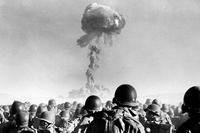
USS Silversides
by Glenn Jordan
The War Below: The Story of Three Submarines That Battled Japan, by James Scott, 450 pages, Simon & Schuster
As combat theaters go there may be none more forbidding than the sea – or more specifically, beneath the sea. And in submarine warfare the very weapons system you serve on provides all you need to stay alive – including air -- the tools of war and, if things go bad, your tomb.
If you can’t imagine living, functioning and fighting in a submerged tube then James Scott paints the picture for you in The War Below: The Story of Three Submarines That Battled Japan in a way that will make you feel it. In this, Scott’s second book – his first was Attack on the Liberty – he tells the stories of the Tang, Silversides and Drum, boats whose histories well represent the “silent service” during the Pacific War.

World War II junkies will know all the place names, the combat engagements and the results, but Scott’s narrative is no dry rehashing of events and details. It is saga, fleshed out with telling imagery and the personal stories of officers and men who lived and sometimes died in the boats. There are spur-of-the-moment jam sessions, buddy-talk of wishes and plans for after the war – assuming the boat doesn’t go missing in action. And of course there’s the chase, the battle strategies and the tactics, related in a dramatic narrative that will keep a reader as focused as the crews doubtless were when they lived the story.
For the reader unfamiliar with this kind of war the story is compellingly told in the moment. It is, as they say, a page turner. The ebb and flow of action generates a sense of adventure usually found in novels. From emergency surgery in the galley to tactfully stalking your enemy for hours and days across the Pacific, from all-in fighting to stay alive to resignation and death, it is a courageous and terrifying ride through war. What does it feel like to be targeted with depth charges for hours on end, or to have a malfunctioning torpedo make a U-turn and seek out your own boat? And through it all you wait to be able to surface, but wonder if, when you finally emerge, will there be an enemy waiting with only one thought in mind – sending you back down, permanently. Or maybe even an easily spooked, trigger-ready ally who is taking no chances.
In the submarine warfare of World War II there were hours and days drudgery. And while that’s clear in the telling of this story there is no drudgery in the reading. At the risk of sounding hokey, pick up The War Below and Dive! Dive! Dive!




